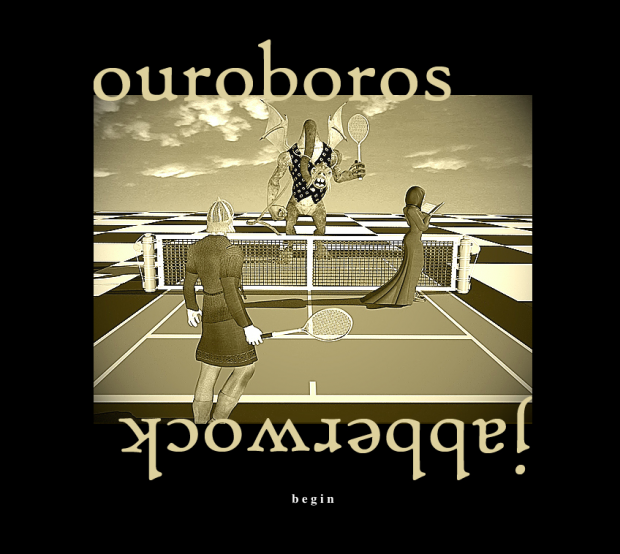Ouroboros and Jabberwock
This diptych or bi-fold work presents readers with two re-workings of Lewis Carroll’s “Jabberwocky:” on one hand, a fixed, cyclical hypertext in seven parts (Ouroboros), and on the other, an endless generative deformation that refigures the mock-epic as tennis game in Hell (Jabberwock). Both options are available at the start, but only in faint, translucent lettering. Letting the cursor dwell on one side or the other activates a sound track -- on the O side, a poetic voice whispering words of wisdom; on the J side, various monstrous re-mixes of Thursday, July 2017.This diptych or bi-fold work presents readers with two re-workings of Lewis Carroll’s “Jabberwocky:” on one hand, a fixed, cyclical hypertext in seven parts (Ouroboros), and on the other, an endless generative deformation that refigures the mock-epic as tennis game in Hell (Jabberwock). Both options are available at the start, but only in faint, translucent lettering. Letting the cursor dwell on one side or the other activates a sound track -- on the O side, a poetic voice whispering words of wisdom; on the J side, various monstrous re-mixes of those words. Dwelling on one side or the other will also cause the favored side to become more fully apparent while its opposite fades toward blankness. If the reader pursues this process to the end, which takes only a few minutes, she is invited to complete her Observation by filling out a brief survey asking reasons for the choice of monsters. Dwelling on one side or the other will also cause the favored side to become more fully apparent while its opposite fades toward blankness. If the reader pursues this process to the end, which takes only a few minutes, she is invited to complete her Observation by filling out a brief survey asking reasons for the choice of monsters.
(Source: ELO 2017 Book of Abstracts).
Uses HTML5 and Java, recommended to use a browser updated not earlier than in 2017.


